Life in the Shadow of an SUV: Ouch! ó 2 October 2002
Itís not easy being a terrapin hatchling. An inch long and a quarter ounce of frenetic energy donít count for much against manís behemoth playthings. Nests dug in marsh-side dirt roads and driveways and parking pads in June and July are hatching in early fall. Vehicular traffic, walkers, and pets have kept predators away from these nests all summer as eggs cooked in the hard-packed soil, architecturally sound and safe from even the massive weekly trash truck.
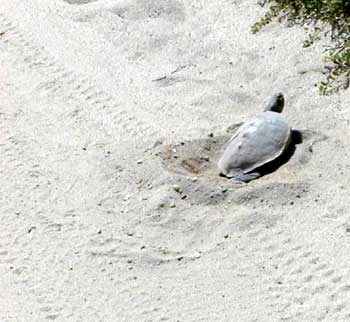 
But once those eggs incubate and hatchlings begin to pip and squirm about, soil is loosened and nest integrity is lost. Where a week ago the nest could sustain the weight of a multi-ton delivery truck, now a trail bike tire might damage its delicate denizens. Last season we discovered nearly every road nest destroyed by vehicular traffic as a hot summer and a delayed close to the tourist season had combined to keep the roads busy with cars through the end of October. This year, as a precaution, we relocated known road nests to safer sites. But turtles are much better at disguising nests than we are at finding them.
So, this evening the mutts and I strolled the dirt roads of Lieutenant Island. The nesting season has largely concluded, yet there are the occasional “late bloomers” to keep this field researcher on his toes. As we inspected a driveway off 5th Avenue (no, not the one with Saks and Macyís, but the one-lane dirt road abutting the marsh of Turtle Pass), we spotted a small emergence hole in the middle of a tire rut worn deep by three months of SUV parking. Excavating Nest 505, I found four live hatchlings, two pipped babies almost ready to meet the world, one potentially viable egg, and the shells from nine other emerged turtles. The ones remaining in the nest all showed shell distortions probably caused by nest compression as they began to pip last week when the nearby cottage was still occupied.
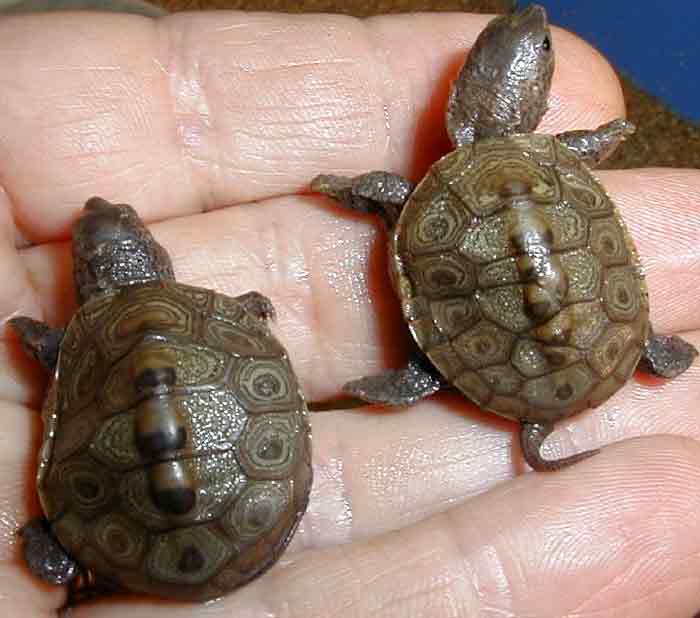
Hatchling 576, 2.53 centimeters long and weighing 5 grams, is warped top and bottom. She has 17 scutes on her carapace and her plastron is wildly distorted, too. The left side of her shell remains caved in.
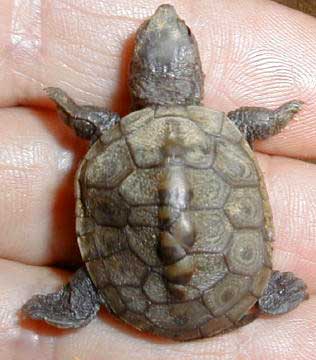 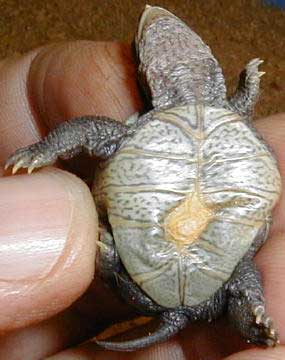
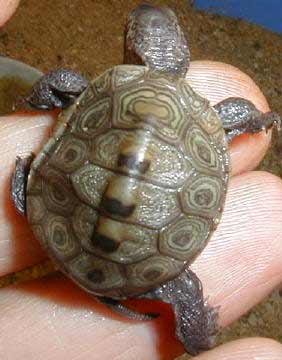 
Hatchling 577ís left side was so compressed that she hadnít used her left rear limb and was crawling around on three legs until I gently stretched it out of its squished cavity. Lucky for these babies, terrapin hatchlings are pliable and resilient youngsters. Just add water and a heat lamp, and these critters begin to snap back into shape, both literally and figuratively. They were dazed when I found them this evening, but already theyíre trying to tunnel their way to freedom.
|